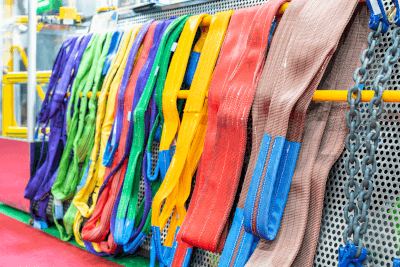What Is a Lifting Belt?

Lifting belts, also known as sling belts or slings, are utilized for hoisting heavy equipment in industries and construction sites. These belts play a crucial role in ensuring worker safety by providing a secure means of lifting loads. Made from flexible, soft materials, they adapt to various shapes and sizes of objects without causing damage.
Choosing the right lifting belt for the load’s weight and shape and attaching it properly are essential to prevent accidents. Damaged belts should be promptly repaired or replaced to maintain safety standards.
Uses of Lifting Belts
Lifting belts serve multiple purposes across different sectors, such as:
1. Construction Sites
They are instrumental in lifting concrete blocks and steel structures for buildings, ensuring these heavy components are securely attached to cranes for installation.
2. Manufacturing Industry
In factories, lifting belts facilitate the safe movement of large machinery and parts, aiding in the assembly line’s supply chain.
3. Warehouses
These belts enable the storage of products on high racks and assist in the efficient loading and unloading of trucks and containers, streamlining warehouse operations.
Principle of Lifting Belts
Lifting belts operate on fundamental physics principles, supporting the load’s weight and distributing it evenly across their length to facilitate lifting by cranes or hoists. Made primarily from synthetic fibers like nylon, polyester, and polyethylene, these belts offer various strengths and resistances suitable for different applications.
How to Select Lifting Belts
Key factors to consider when choosing a lifting belt include:
1. Maximum Load
Ensure the belt’s load capacity exceeds the weight of the intended load to avoid overloading and potential accidents.
2. Dimensions
Select a belt with appropriate length and width to cover the lifting distance and provide sufficient friction for secure handling.
3. Material
Choose a belt material based on the lifting environment and load characteristics, considering factors like load capacity, abrasion resistance, and environmental resilience.